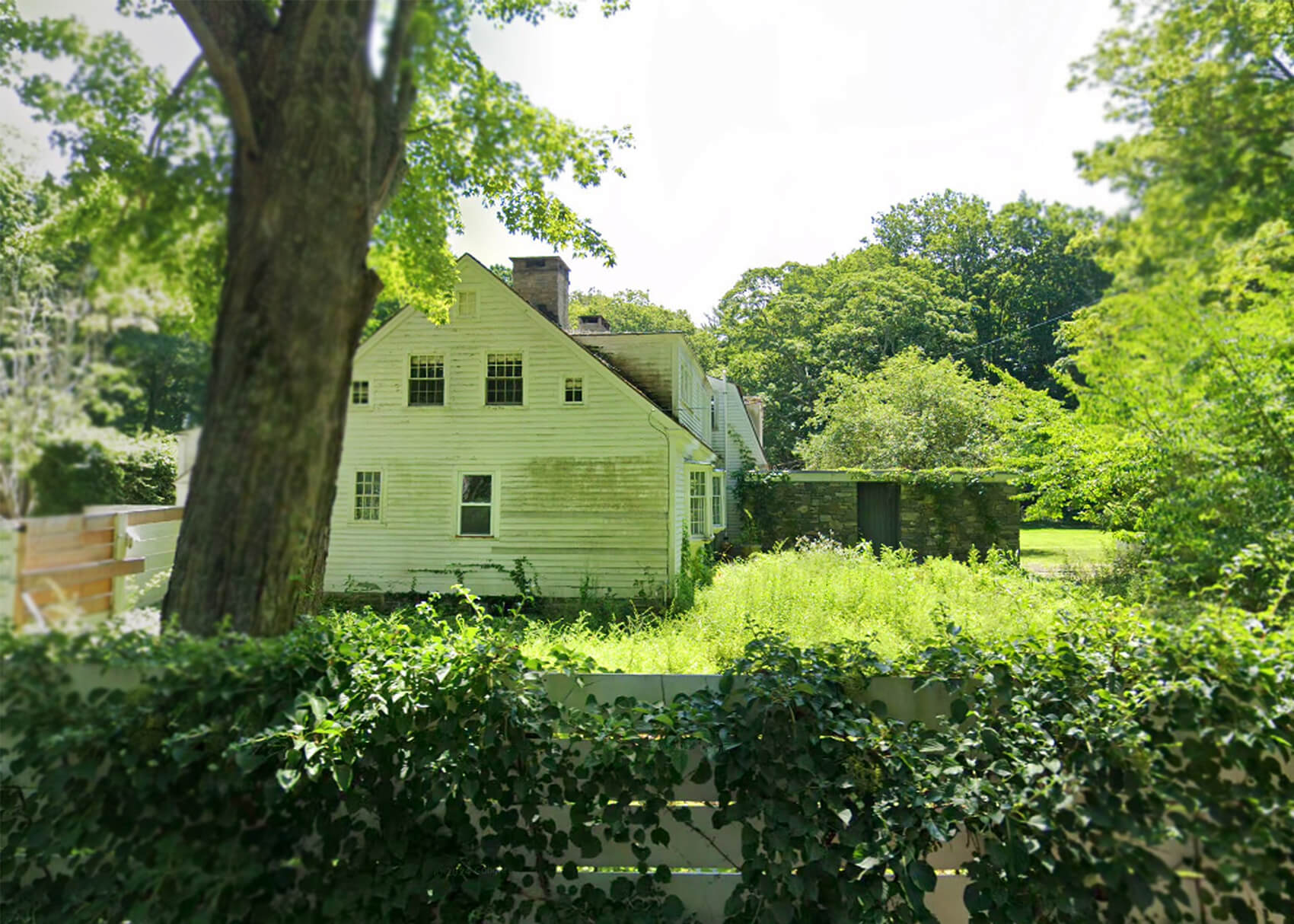The saga unfolding at 6 Opening Hill Road in Madison, Connecticut, reached a boiling point last week. On October 3, notably the first night of Rosh Hashanah, the Madison Planning and Zoning Commission unanimously approved the Emily Hall Tremaine Foundation’s special zoning exclusion application.
Now, the Tremaine Foundation has the green light to convert the Tremaine estate which contains multiple additions by Philip Johnson, a known fascist, into a mixed-use cultural, educational, and residency center. The decision’s alignment with an important Jewish holiday prompted one Madison resident to yell “I hope you burn in hell!”
The conversion was fought hard by many Madison residents, as reported by AN, who have consistently cited traffic and zoning issues, but also Johnson and Tremaine’s history. Madison residents who oppose the decision are considering an appeal with Connecticut Superior Court. The Tremaine Foundation might also file an appeal, but for different reasons—it may seek amendments to the limitations that were placed on guest activities and scheduling.

The approval did receive support from several professional design groups. Hilary Lewis, former chief curator at The Glass House, advocated for the Tremaine Foundation’s conversion, and so did Liz Waytkus, executive director of Docomomo U.S.
Mitch McEwen—a professor at Princeton, cofounder of Black Reconstruction Collective, and founder of Johnston Study Group, a research cohort that exposes Johnson’s Nazism—was an outspoken opponent of the conversion. McEwen submitted a letter to Madison officials on July 16 announcing her criticisms.
In the letter, McEwen said the Tremaine Foundation’s proposal “is not innocent” and, if the application gets approved, the Tremaine estate could become “a nationally recognized memorial to antiblack and antisemitic brutality, albeit a glamorous one.”
A Reckoning?
Certainly, the controversy swirling over 6 Opening Hill Road isn’t just about a house and some blueprints for how to reuse it. As noted by McEwen, the story has implications for MoMA, and many other establishments that bear Johnson’s name. It comes amid a reckoning with Johnson and how institutions he associated with should negotiate that connection.
“Institutions accepting public money to operate in Philip Johnson buildings with an educational mission should consider it part of their duty to the public to face these histories,” McEwen told AN after the October 3 vote. “That means facilitating and funding research on the intersection between Johnson’s design work and his Nazi collusion. It also means grappling with the aftermath of Nazi-adjacent spatial policy in this country—from slum clearance to redlining to segregating housing models and more. Any Johnson space with public support should be a space for that work—not for luxurious revelry in a converted barn. ”

The fact that Johnson designed a literal barn for Tremaine is indeed pertinent, McEwen elaborated. In recent years, scholarship has revealed Johnson was inspired by the burnt shtetls and barns he saw touring Nazi-occupied eastern Europe in the 1930s. This inspiration informed several of the design decisions Johnson made at the Glass House: Johnson once said Glass House’s porous facade anchored by a central hearth was derived from “a burnt wooden village I saw once where nothing was left but foundations and chimneys of brick.”
“We forget that the SS started building the first concentration camps for political prisoners as early as 1933,” McEwen shared. “Johnson curated the [Machine Art] exhibit in 1933 and then left MoMA to do Nazi-aligned political work full time in 1934. Any organization interfacing with the public in a Johnson-designed building should be grappling with this history. This is especially so for any design that resonates at all with concentration camps. Many SS concentration camps were repurposed farms. Auschwitz, itself, was built on stolen farms and contained working farms with cows and horses.”
In Support Of?
Michelle Knapik, Tremaine Foundation’s president, told AN that she has read the reports by Johnson Study Group to MoMA and Harvard GSD pertaining to Johnson’s fascism. In light of these letters, Knapik said “there will be no naming, titles or honorifics of any sort related to Johnson and the structures at 6 Opening Hill Road.” She also said: “The record of Johnson’s designs is in the spirit outlined by the Johnson Study Group as it will only be related only to archival work and historic preservation. Of course, the foundation will consider any new or revised scholarship on this matter.”
“History also beckons us to lift up and make visible complexities and contradictions—it invites us to learn—to reconcile, to heal and to transform,” Knapik offered. “As we have stated Philip Johnson’s fascist, antisemitic, and white supremacist views and actions were and are indefensible. There is no place for these values or positions within the mission-based work of the Tremaine Foundation.”
Knapik elaborated: “The Foundation believes that this past must be included in any accurate history of Johnson’s life and his architectural contributions, including the design work he did for the Tremaine family in the 1950s. As a philanthropic institution, we seek to learn from history as we seek and fund innovative projects that advance solutions to basic and enduring problems.”

Docomomo U.S. previously confirmed its support for the conversion in a letter dated July 9. Following the approval for the project, Liz Waytkus told AN: “We recognize the sensitive nature of this issue and the diverse concerns of the local community, as well as the complex legacy of the Modern Movement and its key architects and designers.”
“In our mission to educate and advocate for the preservation of Modern architecture and design, Docomomo US is committed to advancing diversity, equity, inclusion, justice, and representation as fundamental values in all our initiatives.” Waytkus continued. “We understand that this journey is ongoing, and we are dedicated to learning from and listening to a wide range of voices to ensure that all perspectives are valued and integrated into our work.”
AN reached out Hilary Lewis for comment.

